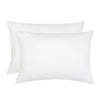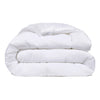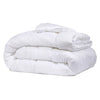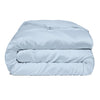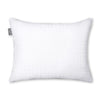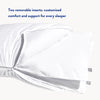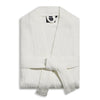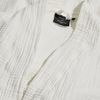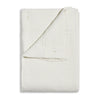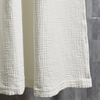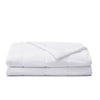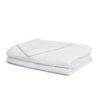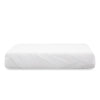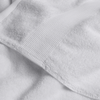The Daily Miracle
How To Make A Duvet Cover: Step By Step Guide
Published
July 26, 2025
Author
John Tsenekos

Finding a duvet cover that matches your style, budget, and comfort preferences can be a challenge. With endless options and complicated instructions, it’s easy to feel stuck. But making your own duvet cover puts you in control. You get to choose the fabric, save money, and enjoy a hands-on project. This guide walks you through each step, from picking the right material to sidestepping common mistakes, so you can sew a duvet cover with confidence, even if you’re new to sewing. Want to update your bedroom and add a personal touch? Let’s dive in.
What Is a Duvet Cover and Why Make Your Own?
A duvet cover is basically a protective casing for your comforter or duvet insert, kind of like a pillowcase for your pillow. Typically made from fabrics like cotton, linen, or blends, it closes with buttons, ties, or zippers. So, why bother making your own? For starters, you get total control over the fabric and design, meaning you can match it perfectly to your bedroom style. Plus, it’s super handy if your bed or duvet has unique dimensions that standard covers just don’t fit. On top of all that, creating your own is a satisfying project that lets you flex your sewing skills while adding a personal, handmade touch to your space. A fully customized handmade duvet cover beats the generic store options, doesn’t it?
Why Most Store-Bought Duvet Covers Miss The Mark
Store-bought duvet covers might be convenient, but they can miss the mark in several ways. Many are made from lower-quality materials like polyester blends, which don’t breathe well and can leave you uncomfortable at night. Additionally, standard sizing can be a major headache since duvets are often inconsistently sized, leaving you with a cover that either sags or squeezes too tightly. And let’s talk about the design options… they’re often limited, making it tough to find one that meshes with your personal style. Plus, the stitching and closures on mass-produced covers can be subpar, leading to tears and other issues down the line. Unless you get a high-quality duvet cover from a reliable brand, making your own is likely the better option.
How To Make A Duvet Cover: Step By Step Guide
Step 1: Measure Your Duvet
Getting accurate measurements is the key to a well-fitting duvet cover. Lay your duvet flat and measure its length and width carefully. Then, add 8-10 inches to each dimension to account for seam allowances and any overlap needed for the closure. This extra fabric ensures the duvet insert fits comfortably inside without being a struggle to stuff in. Make sure to double-check these numbers before moving on, as it’s worth the small effort to avoid costly mistakes!
Step 2: Cut Your Fabric
Now that you’ve got your measurements nailed down, it’s time to cut the fabric. You’ll need two pieces, one for the top and one for the bottom, based on your adjusted dimensions. For example, if your updated measurements are 90x70 inches, cut both pieces accordingly. If your fabric has a pattern, take care to line it up, as it’s this small detail that makes your finished product look polished. Want to get fancy? Consider cutting extra fabric strips to make flanges for the edges, which add a decorative and durable touch.
Step 3: Sew The Fabric Pieces Together
Next, sew the two main pieces together with the right sides facing each other. Leave one side completely open since that will be your closure. Use a ½-inch seam allowance, and backstitch at the start and end of each seam for extra strength. Once all three sides are sewn, press the seams open with an iron to give them a crisp, professional look. Congrats! You’ve just created the “bag” shape of the duvet cover. See? It’s coming together already!
Step 4: Create The Closure
For the open side, you’ll need a secure closure. Buttons, snaps, or even a zipper work well, depending on your preference. Start by folding the edge inward twice to create a clean hem, then sew it down. If you’re going for buttons or snaps, attach them evenly along the edge, ensuring buttonholes are aligned for a neat closure. For a zipper, pin it carefully and sew using a zipper foot on your machine. Whatever option you choose, make sure it’s strong enough to handle frequent use and washing.
Step 5: Finish The Edges
Now comes the finishing touches. Hem any exposed edges to prevent fraying and ensure durability. If you decided to include flanges, sew them on now. They’ll add that polished, high-end look. Once everything is stitched up, give the entire cover a final press to smooth out wrinkles and make the fabric look its best. Voilà! Your handmade duvet cover is complete and ready to elevate your bedroom décor.
How Long Does It Take To Make A Duvet Cover From Start To Finish?
How long it takes really depends on your experience level and how detailed you want to get. Beginners might need around 4-6 hours from start to finish, while more seasoned sewers could crank it out in about 3-4 hours. Want to add fancy features like flanges or decorative stitching? Budget a bit more time. Prepping your fabric by washing and ironing it ahead of time can also make the whole process smoother and quicker, so don’t skip that step!
What Materials Do You Need To Make A Duvet Cover?
Before you get started, gather these essentials: fabric (cotton, linen, or a blend is ideal), matching thread, and of course, a sewing machine, unless you’re going for a no-sew method. For beginners, a step-by-step tutorial can be particularly helpful to guide you through the process. You’ll also need sharp scissors, pins to hold everything in place, a measuring tape for accuracy, and an iron to press your seams. For the closure, decide if you want buttons, snaps, or a zipper. Got it all? You’re ready to go!
Why Is My Duvet Cover Not Staying On The Duvet Insert?
If your duvet cover keeps slipping off the insert, it’s likely an issue with sizing or the closure. A cover that’s too big gives the insert too much room to move around. Double-check your measurements and make sure the fabric overlaps just enough to keep things snug but not too tight. Weak closures, like flimsy buttons, can also contribute. Try adding corner ties inside the cover to secure the insert in place. This small adjustment can make a huge difference.
Can You Make A Duvet Cover Without A Sewing Machine?
Absolutely! While it may take more time, you can use fabric glue or iron-on fusing tape to assemble your duvet cover. These methods are great for lighter fabrics, but keep in mind they might not be as durable as machine-sewn covers. If you go this route, be patient and make sure the adhesives bond well. Your effort and patience will pay off!
How Do You Customize A Duvet Cover For An Unusual Bed Size?
Got a unique bed size? No worries! Customizing a duvet cover is easy. Measure your mattress carefully, add your preferred overhang, then adjust your fabric accordingly (don’t forget to include seam allowances). For especially large or oddly shaped duvets, adding internal corner ties will keep the insert securely in place. This ensures your bed looks evenly made and feels extra cozy.
What Does A Finished, Handmade Duvet Cover Look Like?
A completed, handmade duvet cover should showcase neat seams and a well-secured closure. Whether it’s buttons with well-made buttonholes, snaps, or a zipper, the closure should blend in seamlessly while being functional. If you added flanges or decorative stitching, they’ll give your cover that extra bit of flair. Most importantly, it will fit your insert perfectly and reflect your personal style, making it truly one of a kind, especially when complemented with matching flat sheets!
Common Mistakes To Avoid When Making A Duvet Cover
-
Incorrect Measurements: Double-check your figures to avoid a cover that doesn’t fit your insert properly.
-
Ignoring Grain Direction: Always follow the grain of the fabric to prevent stretching or warping.
-
Insufficient Seam Allowance: Adding at least a ½ inch seam allowance ensures strong, durable seams.
-
Skipping Ironing: Don’t underestimate the power of ironing! Pressing your seams enhances the final look of your project.
-
Weak Closure: Invest in sturdy closures for a long-lasting duvet cover.
Conclusion
Creating your own duvet cover is a rewarding way to personalize your space, express your style, and even save some money. Whether you’re looking for a specific color, a unique pattern, or just want to try your hand at a new DIY project, making a duvet cover lets you take control of your bedroom’s look and feel. With a little patience and creativity, you can craft something that’s truly your own.
If you’re not in the mood to sew or simply want a hassle-free upgrade, treat yourself to the Miracle Made Duvet Cover. Made with silver-infused, NASA-inspired fabric, it stays fresh up to 3x longer and is designed to support cleaner skin. Plus, it’s covered by a 30-Day 100% Money-Back Guarantee, so you can experience comfort and peace of mind, no DIY required.
Sources:


